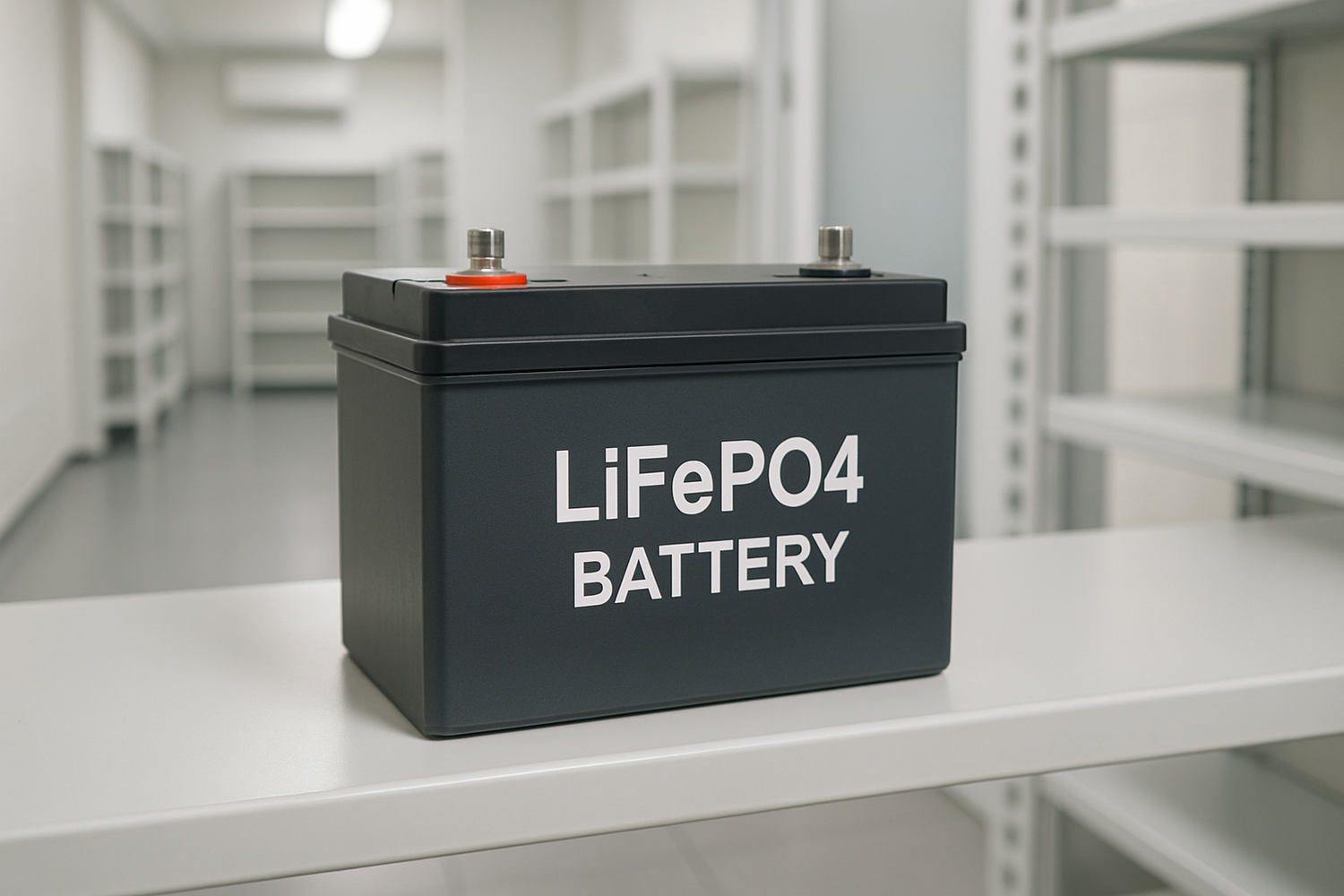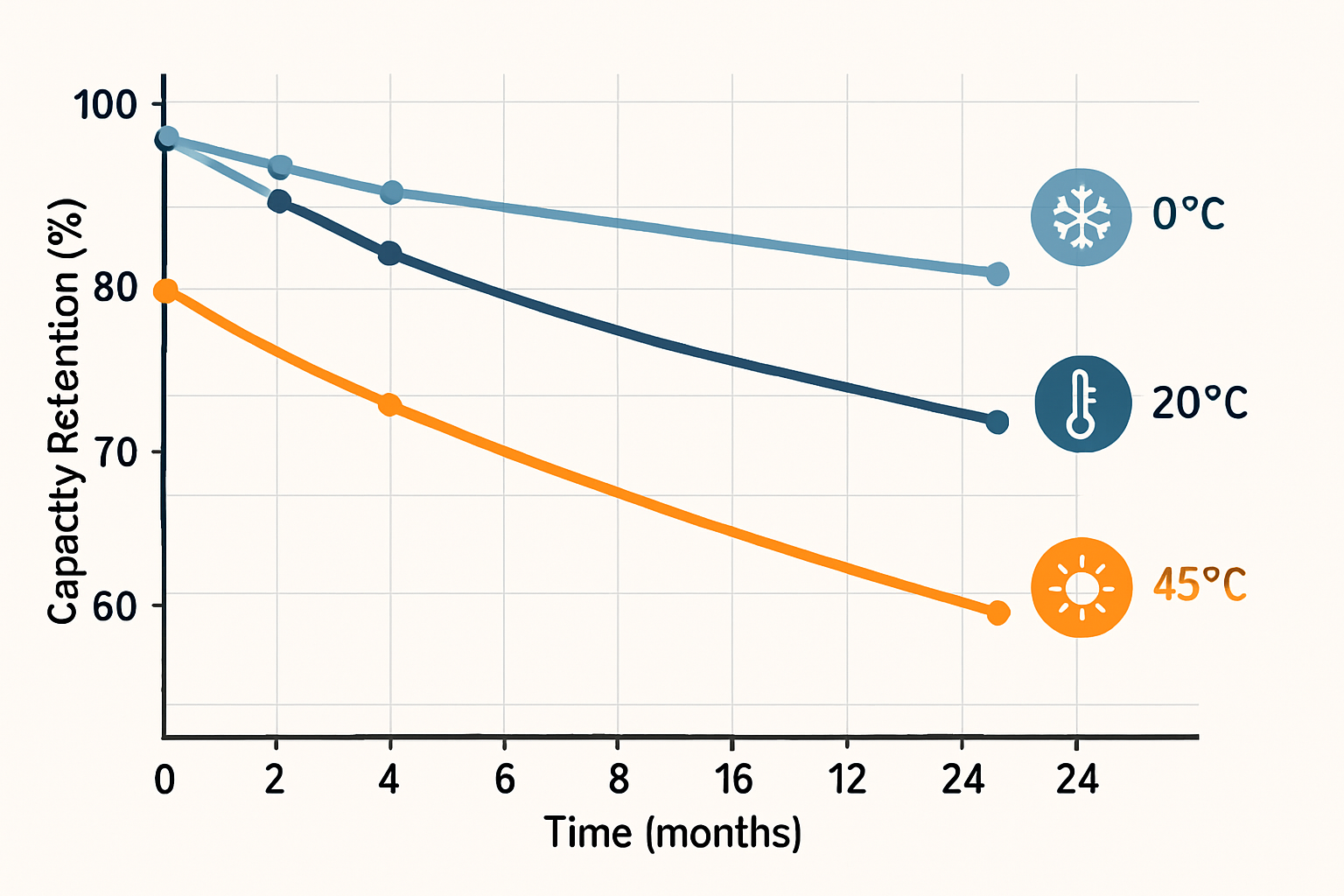Lithium Iron Phosphate (LiFePO4) batteries are a cornerstone of modern solar energy storage systems, celebrated for their safety, stability, and long cycle life. To get the most out of your investment, understanding how to store them properly is crucial. Incorrect long-term storage can degrade battery performance and shorten its operational life. This guide provides clear, actionable steps for preserving your LiFePO4 batteries, ensuring they are ready to perform when you need them.
The Critical Role of State of Charge (SOC) in Storage
The amount of charge a battery holds when you put it away for an extended period significantly impacts its long-term health. It's a common misconception that batteries should be stored fully charged.
Why Storing at 100% is Detrimental
Keeping a LiFePO4 battery at a 100% state of charge for months places stress on its internal components. This sustained high-voltage state can accelerate the degradation of the cathode material and lead to a gradual, irreversible loss of capacity. Think of it as holding a muscle in a tensed position for too long; it eventually leads to fatigue and damage.
The Optimal SOC for Longevity
For long-term storage, the ideal state of charge for a LiFePO4 battery is between 40% and 60%. In this range, the battery's internal chemistry is at its most stable. The voltage is not high enough to cause stress, nor is it low enough to risk over-discharge. Maintaining this partial SOC minimizes chemical side reactions that degrade the battery over time, preserving its capacity and extending its service life.
Achieving the Correct SOC
You can set your battery to the optimal storage SOC using several methods. The most reliable way is through a programmable charger or an integrated Battery Management System (BMS) that displays the SOC. If you lack these tools, you can use a multimeter to check the voltage. For a 12V LiFePO4 battery, a voltage of around 13.0V to 13.2V typically corresponds to this ideal SOC range.
Mastering the Storage Environment
Where you store your battery is just as important as its state of charge. Temperature and humidity are the two primary environmental factors you need to control.
Temperature: The Silent Performance Killer
Temperature has a profound effect on battery health. High temperatures accelerate the internal chemical reactions, leading to faster capacity loss and degradation. Conversely, storing a battery in freezing conditions can damage its internal structure. The ideal storage temperature is in a cool, stable environment, typically between 5°C and 25°C (41°F and 77°F). Avoid locations with extreme temperature swings, such as sheds, garages, or attics.
| Storage Temperature | Approximate Capacity Loss at 50% SOC | Approximate Capacity Loss at 100% SOC |
|---|---|---|
| 0°C (32°F) | ~1% per year | ~3% per year |
| 25°C (77°F) | ~2% per year | ~10% per year |
| 40°C (104°F) | ~5% per year | ~20% per year |
Disclaimer: These values are illustrative. Actual degradation rates can vary based on battery manufacturer and specific conditions.
Humidity and Location Considerations
Store your LiFePO4 batteries in a dry and well-ventilated area. High humidity can lead to corrosion on the terminals, which can impede performance when you reconnect the battery. Ensure the storage location is away from direct sunlight, heat sources, and any flammable or corrosive materials. A clean, organized space prevents accidental damage.
Pre-Storage Preparation and Maintenance
Before placing your battery into storage, a few preparatory steps will ensure it remains in optimal condition.
Disconnect Everything
The first and most important step is to completely disconnect the battery from your solar energy system. This includes disconnecting it from any loads, chargers, or inverters. Even small, parasitic loads can slowly drain the battery over time, potentially pushing it into a damaging low-voltage state. As noted in research on energy storage, even small system imbalances can affect long-term viability, making complete disconnection a vital step. According to the International Energy Agency's report, China Power System Transformation, managing both short-term and long-term storage is essential for system stability, a principle that applies right down to the individual component level.
Inspect and Clean
Take a moment to inspect the battery's casing for any signs of cracks, bulges, or other physical damage. Clean the terminals with a dry cloth to remove any dust or corrosion. Clean terminals ensure a solid connection when the battery is put back into service. This simple maintenance routine is a key part of maximizing solar storage performance, as detailed in the ultimate reference on solar storage performance.
Reactivating Your Battery After Storage
Bringing your battery out of storage correctly is key to ensuring it performs as expected.
Periodic Health Checks
Even with low self-discharge rates, it's wise to check the battery's voltage every 3-6 months. If you notice the voltage has dropped significantly (e.g., below 12.8V for a 12V battery), you should give it a brief charge to bring it back into the optimal 40-60% SOC range. This prevents it from ever reaching a critically low charge level.
The Wake-Up Procedure
When you are ready to use the battery again, do not immediately connect it to a heavy load. First, connect it to a compatible LiFePO4 charger and perform a full, slow charge until it reaches 100%. Once fully charged, it is good practice to perform one full discharge and recharge cycle. This helps to recalibrate the BMS and ensures the cells are properly balanced for optimal performance. The importance of integrating storage to meet energy demands is highlighted in an EERE Success Story from the Department of Energy, which shows how stored energy can be dispatched when needed most.
Protecting Your Energy Independence
Properly storing your LiFePO4 batteries is a simple but effective strategy for protecting your energy investment. By maintaining an optimal state of charge, controlling the storage environment, and following correct pre-storage and reactivation procedures, you ensure your battery delivers reliable performance for its entire expected lifespan. These practices are fundamental to building a resilient and efficient renewable energy system, a goal supported by global initiatives to advance energy storage technologies, as outlined by the International Renewable Energy Agency's Innovation outlook on thermal energy storage.
Frequently Asked Questions
Can I store a LiFePO4 battery fully discharged?
No, this is highly discouraged. Storing a LiFePO4 battery at 0% SOC can cause it to enter a deep discharge state. This can lead to irreversible damage to the internal cells, potentially making it impossible to recharge and rendering the battery unusable.
How long can I store a LiFePO4 battery?
When stored under ideal conditions (40-60% SOC in a cool, dry environment), a LiFePO4 battery can be stored for over a year with minimal capacity loss. It is recommended to check its voltage every 3-6 months and provide a top-up charge if necessary.
What happens if I store my LiFePO4 battery in a hot garage?
Storing the battery in a hot environment, like a garage during summer, will significantly accelerate its aging process and capacity degradation. High temperatures increase the rate of unwanted internal chemical reactions, which can permanently reduce the battery's lifespan and overall performance.





Leave a comment
All comments are moderated before being published.
This site is protected by hCaptcha and the hCaptcha Privacy Policy and Terms of Service apply.